Conquering the bottom of the sea. Microsoft and its submarine data center project
What led the test under the code name Leona Philpot
Under the water! Microsoft intends to develop the concept of placing the server farm at the bottom of the sea. Pro prototype codenamed Leona Philpot wrote in a previous article. And so, at the DatacenterDynamics Enterprise 2016 conference, the corporation shared its plans in the near future to deploy a “real” data center under water, which will soon be put into operation.
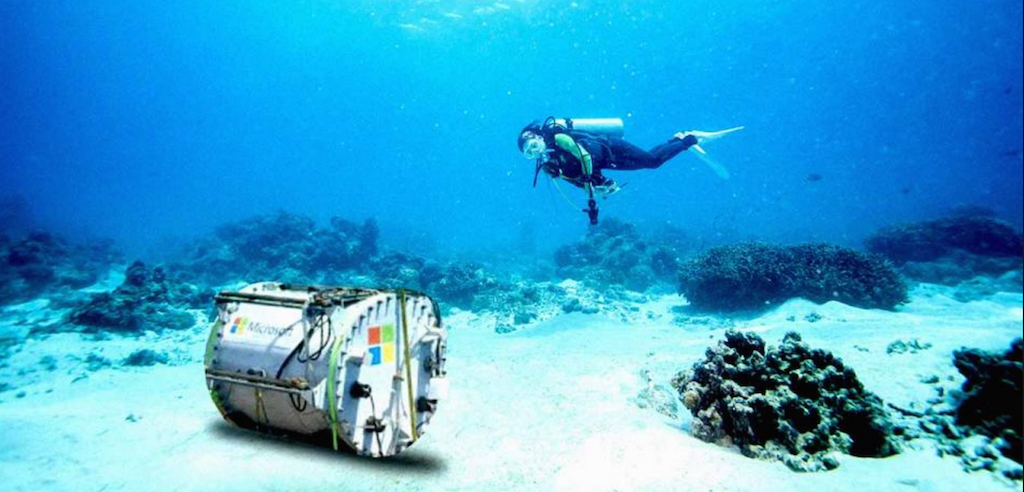
Let me remind you that in August 2015 a prototype cylindrical server farm, with dimensions of about 3 by 2 meters, was immersed a kilometer from the US Pacific coast and was successfully operated for four months.
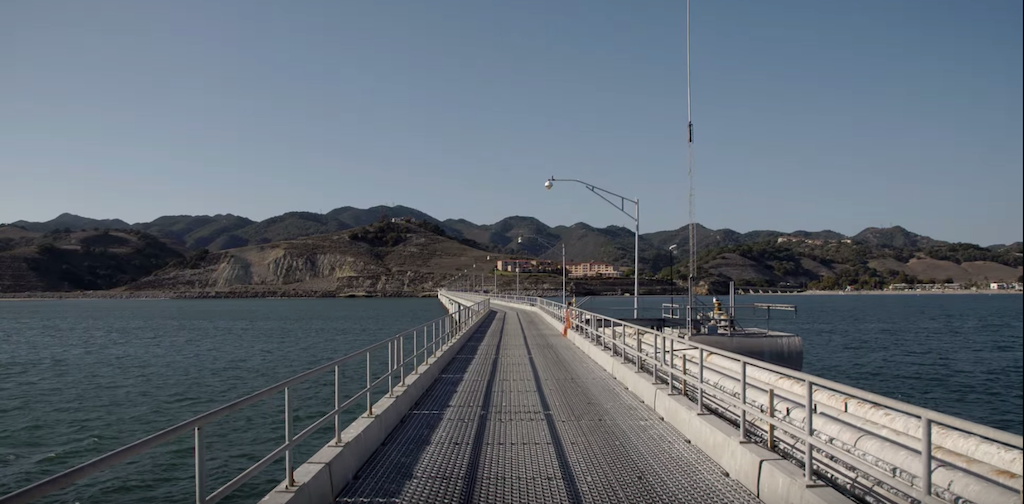
')
Leona Philpot was supplied with a large number of heat exchangers, which in turn transferred excess heat from the servers to cold water.
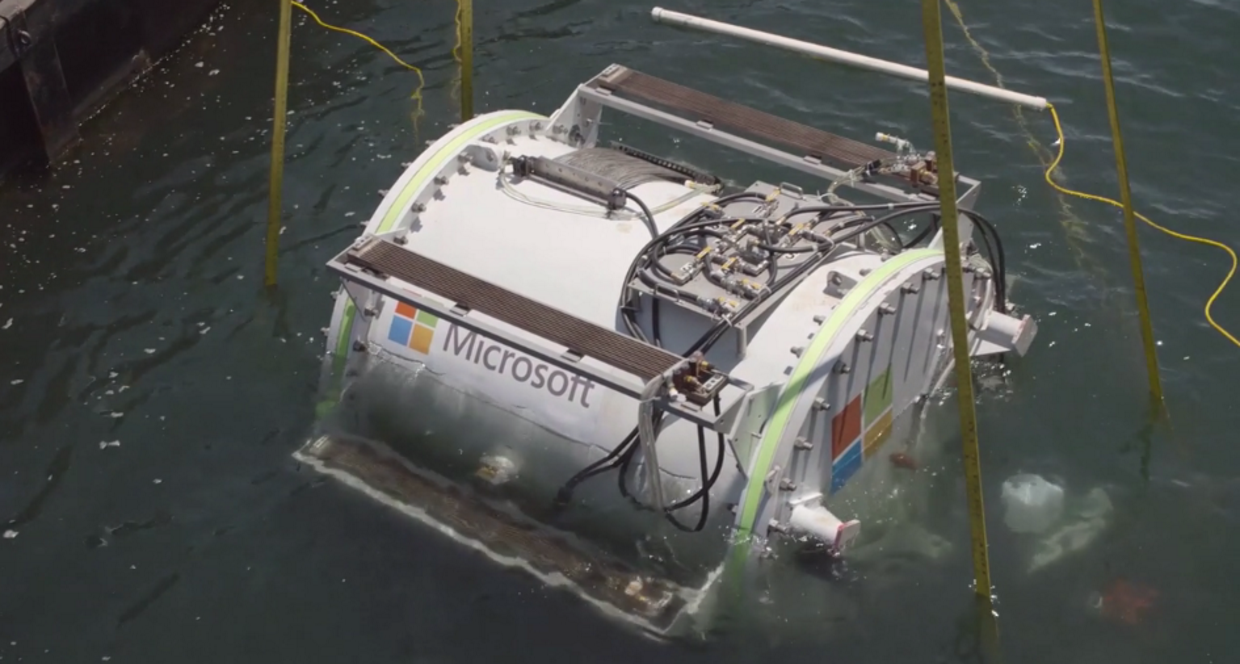
Microsoft engineers placed the servers inside the container, they were managed remotely. The test lasted 105 days. After the subsea server farm was lifted from the bottom, an analysis of the results began.
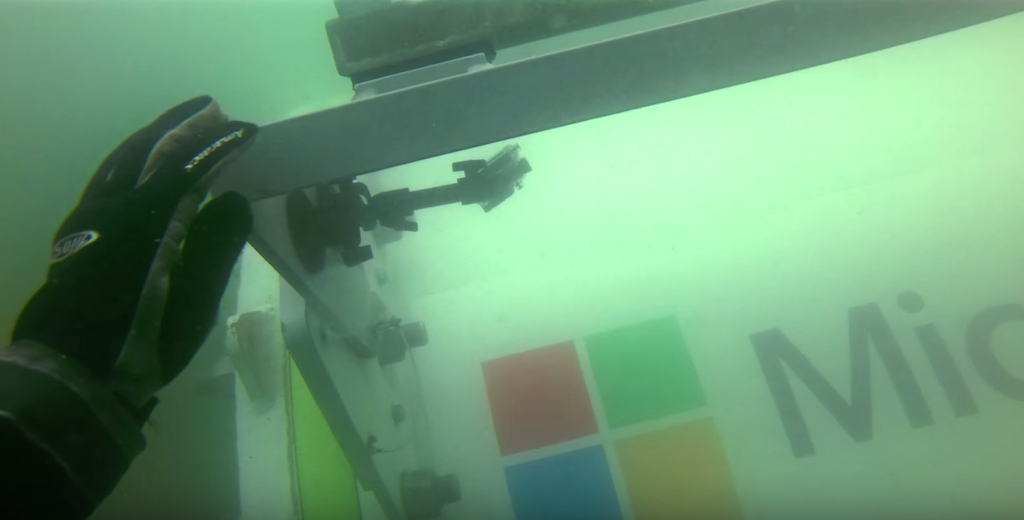
He was raised in November and transported by truck to Microsoft headquarters in Redmond, Washington (USA) for further analysis.


The test was successful, without failures in the equipment + achieved high energy efficiency. As for the cooling system, it worked well and exceeded some of the target parameters in the area of efficiency.


According to the top manager, this result gave Microsoft engineers confidence that they should place the underwater data center at an even greater depth, in an even colder environment, so it was decided to develop this concept for the further construction of server-side data storage underwater kingdoms. Initially, the prototype was immersed 10 meters, but now the company is confident that you can “dip” the server farm deeper.
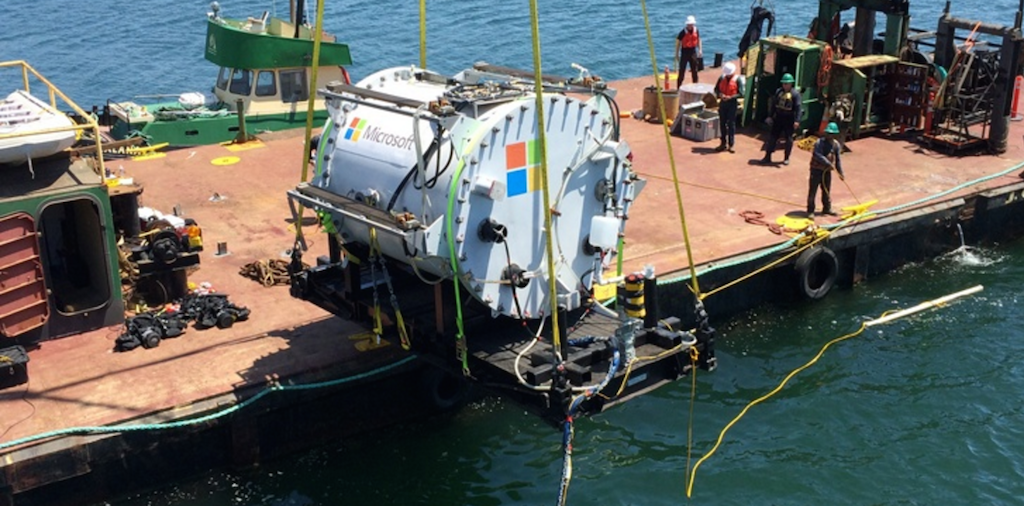
Microsoft spokesman Ben Cutler said that the size of the future underwater data center will be four times larger than the Leona Philpot prototype being tested, and the power placed inside the data center equipment will reach half a megawatt.
According to Cutler, you can deploy a data center with a capacity of 20 megawatts (or more) if you combine such separate modules into one data center. Due to the fact that such a data warehouse will be deployed near the coast of a large city, this will provide minimal delays for users / customers living nearby. Plus, the fact that such a server farm will be several times cheaper than on land, and the mobility of the underwater data center will provide the opportunity to move it in the shortest possible time in the right regions.
Regarding energy production for such underwater kingdoms
The Microsoft project assumes that the turbines will be equipped with underwater data centers and will be used to generate electricity using the mechanical energy of the ocean waves and currents. Therefore, corporation engineers are now actively studying how appropriate it is to use underwater generating capacity (it is planned to use turbines that will generate electricity due to the movement of water under the surface of the ocean, waves).
The work on the project of the autonomous underwater data center gave the corporation specialists the opportunity to develop a new approach to working with servers without physical access of operators to the servers. In order to increase the heat removal efficiency, the first module was filled with nitrogen. This helped avoid dust collection on the components of computing systems. An internal cooling circuit and an external heat exchanger based on a keel cooler and a number of non-standard designs from Microsoft were used as the prototype cooling.
Among the advantages of the underwater data center are the reduction of costs due to the use of water for cooling the servers and auxiliary equipment inside the server farm, the organization of power supply at the expense of the same water, savings in the acquisition or construction of real estate and the payment of property tax.
Is such a data center environmentally friendly?
The prototype Leona Philpot did not have a negative impact on the environment. The module itself generated very little heat, so even various representatives of the local fauna chose a place on the underwater data center. The new prototype, as we are assured, will be able to demonstrate a zero carbon footprint, while there will be no need for water intake from outside to cool the servers.


Currently, methods are being explored for deploying the computing infrastructure that will allow data centers to be located at more serious depths, but they will not adversely affect the environment as a whole. For this purpose, outside scientists were involved in the work on the project.
Project Natick

Source: https://habr.com/ru/post/282754/
All Articles